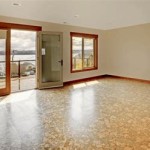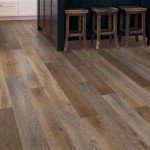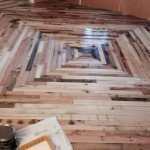Can You Put LifeProof Flooring Directly On Concrete Floors In House?
Lifeproof flooring, a popular choice for its durability and water resistance, offers a stylish and practical solution for homeowners. However, many wonder whether this flooring can be installed directly onto concrete subfloors. The answer is: it depends. While LifeProof flooring is designed for ease of installation, certain factors must be considered before proceeding.
Understanding Concrete Subfloors
Concrete subfloors are prevalent in many homes, providing a solid foundation for various flooring types. However, concrete can be susceptible to moisture issues, unevenness, and potential cracks. These factors influence the suitability for direct installation of LifeProof flooring.
Concrete subfloors should be dry, level, and free of any significant cracks or imperfections. Moisture levels are critical; excessive humidity can lead to warping, buckling, or delamination of the flooring. A moisture test should be conducted to ensure that the concrete meets the manufacturer's requirements for direct installation.
Benefits of Installing LifeProof Flooring Directly on Concrete
Direct installation of LifeProof flooring onto concrete offers several advantages, simplifying the process and potentially saving on costs. The absence of a subfloor eliminates the need for additional materials, labor, and time. This approach streamlines the project and reduces the overall expense.
Furthermore, direct installation can provide a tighter seal, minimizing the risk of moisture penetration and potential damage. This minimizes the risk of issues related to moisture-sensitive materials or issues related to the subfloor itself.
Considerations for Direct Installation
Before opting for direct installation, it's crucial to assess the condition of the concrete subfloor. If the concrete is uneven, cracked, or exhibits moisture issues, direct installation is not recommended. Preparing the subfloor properly is essential for successful and long-lasting installation.
Uneven concrete can lead to subfloor movement, which can cause gaps or unevenness in the flooring. Significant cracks can compromise the structural integrity of the subfloor, potentially leading to issues with the flooring itself. Excessive moisture can lead to warping and damage to the flooring. Addressing these issues before installation can ensure the flooring's longevity and performance.
Alternatives to Direct Installation
If the concrete subfloor does not meet the requirements for direct installation, there are alternative solutions. A moisture barrier or a layer of plywood can be installed over the concrete to create a suitable surface. These options provide a stable and moisture-resistant base for the flooring. This approach can help address any unevenness or moisture issues within the concrete subfloor.
Consulting with a flooring professional is recommended for accurate assessment and guidance. A qualified professional can evaluate the existing subfloor and recommend the most appropriate installation method for your specific needs. They can address potential problems and ensure a successful installation.

Lvp Flooring Installation Over Concrete Subfloor Full Instructional Builds By Maz Flooret

Tips For Installing Vinyl Plank Over Concrete Floors Lemon Thistle

How To Install Vinyl Plank Flooring Lifeproof Over Concrete

Why We Chose Lifeproof Vinyl Flooring And How To Install It

Why We Chose Lifeproof Vinyl Flooring And How To Install It

How To Install Lifeproof Flooring The Home

How To Install Lifeproof Flooring The Home

How To Install Vinyl Or Laminate Floors In A Basement Over Concrete Slab

Why We Chose Lifeproof Vinyl Flooring And How To Install It

Installing Vinyl Plank Flooring Lifeproof Waterproof Rigid Core Sustain My Craft Habit
See Also







